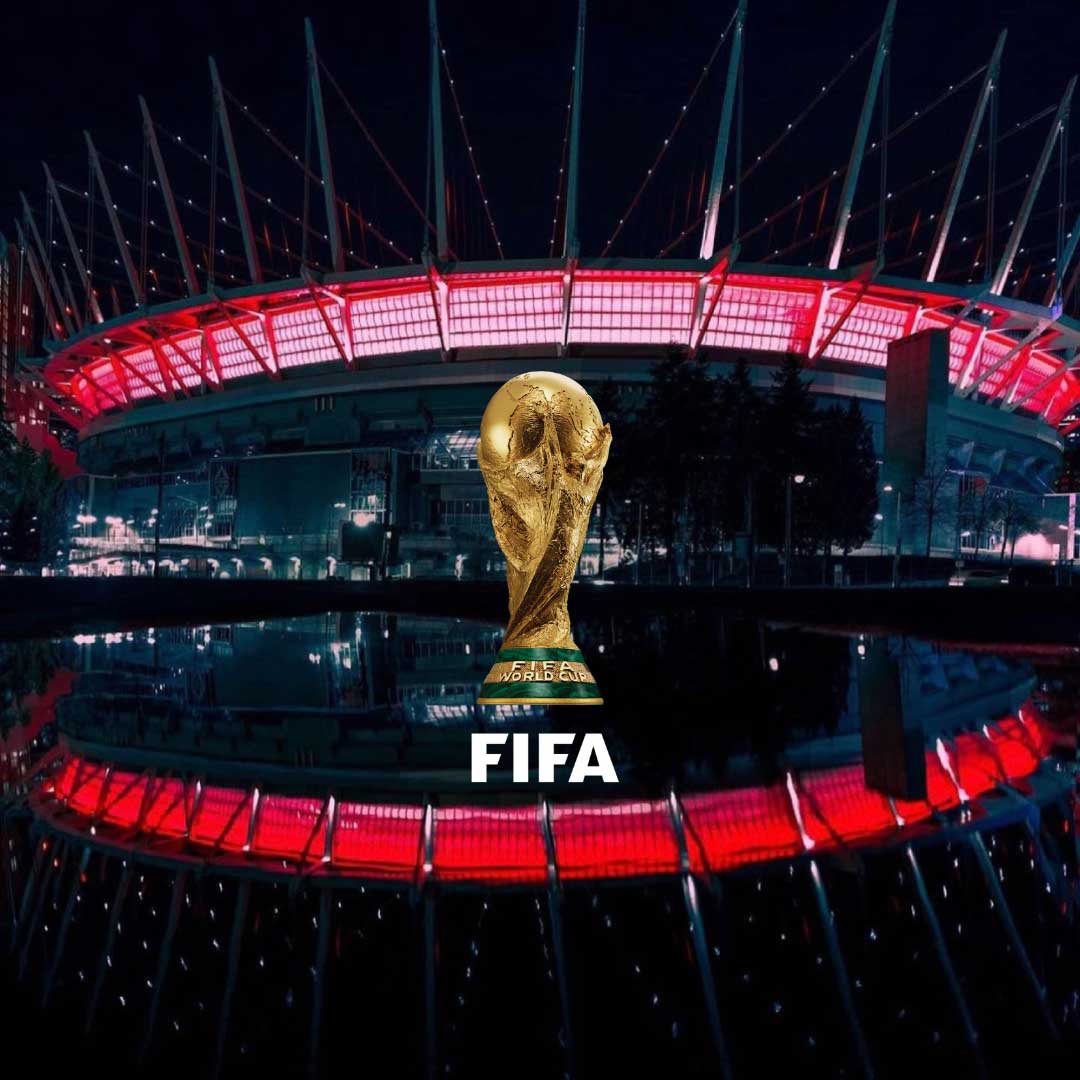Subtotal $0.00
Lead: Global Drama in World Cup Qualifiers
World Cup qualifier drama swept across continents as teams traded goals, staged comebacks, and pressed for crucial wins to stay in contention for the FIFA showpiece. This analysis captures the day’s narrative: the stars who turned pressure into points, home advantage shaping results, and the tight shifts in the standings that will define the road ahead. The focus is on best-in-class performances, standout moments, and goalkeeper heroics that preserved opportunities in tight groups. The World Cup qualifier drama promises more critical battles in the fixtures to come.
Overview of the Day
Today’s matches delivered a clear arc: moments of late drama, dynamic attack lines, and resilience from teams fighting for every point. The World Cup qualifier drama was fueled by high-intensity tempo, smart substitutions, and patient buildup that fractured defenses. Coaches balanced risk with discipline, knowing that a single result could tilt a group from hopeful to urgent. As fans watched, the narrative shifted in real time, reminding everyone that qualification is a marathon where momentum matters just as much as form.
For broader context on the fixtures around the globe, fans can explore the official match centers and federation updates at FIFA and regional bodies such as the AFC, UEFA, CAF, and CONCACAF for comprehensive match data and player insights. These sources provide context on travel fatigue, home advantage, and tactical shifts that underpinned the day’s results.
High-Scoring Thrillers, Comebacks, and Last-Minute Goals
High-Scoring Thrillers
Across several groups, defenses buckled under sustained pressure as attackers found gaps in compact blocks. The World Cup qualifier drama was amplified by rapid transitions, where counter-attacks turned into goals in minutes. Midfielders split lines with precision passes, creating shooting opportunities that kept fans on edge until the final whistle. Goal lists lengthened in a way that underscored the attack-minded nature of modern qualifiers, where every point matters and goal difference can become decisive late in the campaign.
These thrillers also tested goalkeepers, who produced standout saves to preserve slim leads. The day’s best performances combined shot-stopping with quick restarts, forcing pressure back onto the opposition and often flipping momentum at critical moments. As the fixtures concluded, several shot-stoppers earned plaudits for keeping teams within reach of qualification while the attacking players earned headlines for decisive finishes in tight games.
From a fan engagement angle, the tempo of these matches amplified social-media buzz and television viewership, reinforcing the World Cup qualifier drama as a premier spectator sport. For additional context on how high-scoring contests influence run-ins, see the authoritative coverage at FIFA.
Comebacks and Last-Minute Goals
Late drama defined the day as several sides overturned deficits and rescued draws or wins in stoppage time. The World Cup qualifier drama often hinges on moments when discipline gives way to sheer resolve, and coaches trusted their bench to deliver. Substitutes came alive, creating fresh momentum that changed the trajectory of groups sensitive to every goal. These comebacks were as much about endurance as execution, proving why qualification battles persist to the final rounds.
Managers stressed psychological resilience in their post-match assessments, highlighting how a single goal in the 90th minute can alter training priorities for weeks. The most memorable late strikes offered air-tight finishes or decisive headers in crowded boxes, turning points that elevated players into national talking points and redefined team morale. The sequence of late goals reinforced the notion that the World Cup qualifier drama is as much about mindset as tactics, and that late moments can seal an entire campaign’s fate.
Standings Shifts: Who Gained Ground and Who Fell Behind
Shifts in the Table
With every result, the standings shifted in a way that redefined the strategic outlook for coaches and federations. The World Cup qualifier drama manifested in teams moving toward or away from direct qualification spots, with goal difference acting as a critical tiebreaker. A home win could now serve as a cushion, while a toughaway result might push a squad into a more precarious position. These shifts increased pressure on upcoming fixtures, elevating the stakes for managers juggling squad depth, fatigue management, and rotation plans.
Analysts noted that momentum can be as decisive as points, especially in groups with tight margins. A single win in a congested window can create a snowball effect, elevating confidence and performance in subsequent games. Fans should watch how national programs adjust their training cycles, travel schedules, and recovery protocols as the qualification race intensifies.
For readers seeking deeper data, federation pages and analytics hubs provide metrics on expected goals, shot quality, and goalkeeper saves that help explain why certain teams rose while others slipped. See ongoing coverage at CONCACAF and CONMEBOL for region-specific dynamics and standings snapshots that illustrate these shifts.
Road to the World Cup: Implications for Upcoming Fixtures
Strategic Implications
The day’s outcomes have clear implications for the road to the World Cup. Teams that secured points at home gained a psychological edge and used their platforms to set tactical standards for upcoming ties. The World Cup qualifier drama now informs preparation windows, with coaches prioritizing continuity in core systems while exploiting opponents’ fatigue patterns from travel or congested schedules. The practical takeaway is that every next match carries even more weight, so decision-making around lineup selection and risk management will be scrutinized in press conferences and federation briefings.
As coaches reassess, several sides have signaled intent to exploit specific matchups in the calendar. Varying pressing intensities, defensive shapes, and counter-press triggers will be mapped across training camps and friendlies before the next wave of qualifiers. For fans and analysts, watching how teams adapt to rising stakes will offer the most telling indicators of who can sustain momentum through the window ahead.
Regional Snapshots: Europe, Asia, Africa, Americas
Europe
The European landscape showcased a mix of resilience and breakthrough performances, with several established powers reaffirming their status and others signaling improvements that could disrupt the pecking order. The World Cup qualifier drama manifested in tactical evolution—compact defensive blocks meeting quick transitional presses that stretched the pace of play. Nations cornered into pressing situations demonstrated how technique and tempo can grind down opponents over 90 minutes, even on challenging pitches. For region-wide context, UEFA’s reports and match centers offer granular insights into group-by-group progression and player-to-player comparisons.
Key players emerged as catalysts, while coaches refined game plans to balance domestic leagues and international duties. The region’s depth of talent means that even teams with modest reputations can disrupt favorites on given days, underscoring why Europe remains a nucleus of the global qualification narrative. For additional regional updates, see UEFA.
Asia
In Asia, the World Cup qualifier drama unfolded amid long travel legs and diverse climates, testing squads’ endurance and adaptability. Teams pursued clean sheets and decisive counter-attacks that exploited transitional gaps, with young talents providing spark alongside seasoned veterans. Tournament formats in the AFC spotlight emphasize consistency, meaning every point from moody away fixtures doubles in importance as the road to Qatar tightens. Regional analysis from the AFC highlights how strategic planning is translating into results across northern and southern corridors.
Africa
Africa’s qualifiers delivered dramatic shifts as teams balanced domestic fatigue with continental travel. The World Cup qualifier drama here often centers on robust defensive blocks and decisive set-piece efficiency, where small margins decide outcomes. The results push federations to optimize scouting, injury management, and player availability for critical windows. CAF’s platforms remain the best source for formal match reports, while independent analysts track how emerging talents shape the future of their national teams.
Americas
Across the Americas, the mix of CONMEBOL’s high-stakes contests and CONCACAF’s regional battles created a rich tapestry of the World Cup qualifier drama. South American derbies offered technical speed and precision, while North and Central American games underscored resilience, late goals, and endurance. The regional dynamic is one reason why the road to qualification remains intensely competitive, with several nations gazing toward the next slate of fixtures as a potential turning point. For ongoing data and regional context, fans can follow CONMEBOL and CONCACAF.
Key Moments and Player Performances
Goal-of-the Day and Saves
Among the standout moments, a few strikes and saves defined the day’s narrative of World Cup qualifier drama. A volley from distance met the back of the net in a dramatic fashion, while a goalkeeper’s acrobatic save kept a crucial point within reach. These moments not only shaped results but also fueled fan discourse on social media and broadcast analysis, underscoring the power of individual brilliance in the broader team story.
Analysts highlighted how those performances translated into tangible confidence for teammates, elevating collective performance in subsequent tests. The best saves and finishes often become the talking points that frame a nation’s preparation for the next round, illustrating how a single moment can alter a team’s trajectory as qualification pressure intensifies.
Player Performances
Beyond highlight-reel moments, a handful of players consistently delivered in the World Cup qualifier drama. Midfielders orchestrated transitions with crisp passing, forwards converted chances with clinical precision, and defenders anchored organized backlines under pressure. The day’s player stories will fuel scouting reports and national-team conversations for weeks, as coaches consider which performers should anchor future campaigns and which emerging talents deserve more time on the field.
What to Watch Next: Schedule and Critical Battles Ahead
Upcoming Fixtures
The calendar now pivots to a new slate of fixtures where every point is magnified. Teams that secured momentum will look to translate it into qualification-sealing performances, while others carry a heavier burden of expectation. The World Cup qualifier drama will continue to unfold as travel demands and rest periods influence squad selection. Fans should monitor official federation announcements and match previews for injury news and tactical previews that shape outcomes in the coming weeks.
For fans seeking a consolidated digest of upcoming matches, FIFA’s official schedule and regional pages provide reliable references to dates, venues, and broadcast windows. See FIFA for the global schedule and UEFA for European fixtures.
Critical Battles Ahead
As the qualification campaigns advance, several anticipated clashes stand out as potential turning points. Rivalries within groups are re-ignited, and coaches already stress the importance of squad depth, rotation, and the ability to maintain sharpness across two or more matches in quick succession. The World Cup qualifier drama will likely intensify as strategic decisions in training camps meet the realities of travel and fatigue. Fans can expect a series of decisive nights where a single result will redefine the pace of the race.
To stay ahead of the curve, readers should follow official standings updates and expert analyses. Regularly checking federation portals and trusted broadcasters will help fans understand which teams hold the upper hand and which sides must seize opportunities to advance their World Cup dreams.













